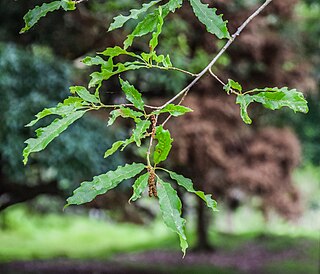
Quercus lancifolia is a species of oak found in Central America and Mexico.
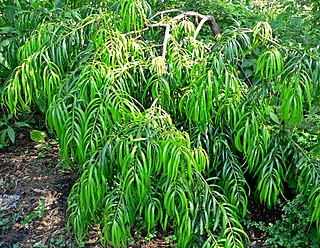
Podocarpus matudae is a species of conifer in the family Podocarpaceae. It is found in Guatemala, El Salvador, Honduras and Mexico.

Quercus benthamii is a species of oak in the family Fagaceae. It is native to cloud forests of Central America and southern Mexico. It is threatened by habitat loss.
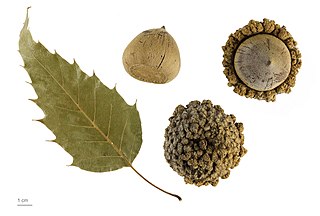
Quercus skinneri is a species of oak. It is found in Mexico, Guatemala, Honduras, and El Salvador. It is threatened by habitat loss.

Quercus uxoris is an uncommon species of oak.

Quercus xalapensis, or xalapa oak, is a species of oak in the red oak group. It is native to the mountains of eastern and southern Mexico, as well as Guatemala, Honduras, and Nicaragua in northern Central America.

Quercus glaucoides is an oak species in the white oak section, Quercus section Quercus, found in and endemic to eastern, central and southern Mexico.

Quercus polymorpha, the Mexican white oak, Monterrey oak or netleaf white oak, is a North American species of oak. It is widespread in Mexico, Guatemala, and Honduras, and known from a single population in the United States but widely planted as an ornamental.

Quercus magnoliifolia, also known as encino amarillo, encino avellano, encino bermejo, encino blanco, encino napis, encino prieto, and roble, is a Mexican species of oak. It is widespread along the Pacific Coast of Mexico from Sinaloa to Chiapas, and also found inland as far as Zacatecas and Puebla.
Quercus deserticola is a Mexican species of oaks in the beech family. It grows in central Mexico in the States of Guanajuato, México, Hidalgo, Jalisco, Querétaro, Oaxaca, Sinaloa, Puebla, and Michoacán.

Quercus glabrescens is a species of oak. It is endemic to the mountains of east-central Mexico.

Quercus peduncularis is an oak in the white oak group native to Mexico and Central America, ranging from Jalisco to Honduras.
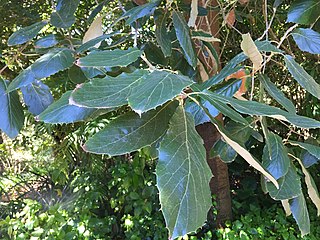
Quercus candicans is a Mesoamerican species of oak tree. It is native to mountain forests of central and southern Mexico, Guatemala, and El Salvador.

Quercus castanea is a species of oak tree. It is widespread across much of Mexico from Sonora to Chiapas, and in Guatemala, El Salvador, and Honduras.
Quercus urbani, also known as Quercus urbanii, is a species of oak. It is native to western and central Mexico from Sinaloa, Durango, and Zacatecas to Oaxaca.

Quercus insignis is a Mesoamerican species of oak in the white oak section, within the beech family. It is native to southern Mexico and Central America, from Veracruz to Panamá.
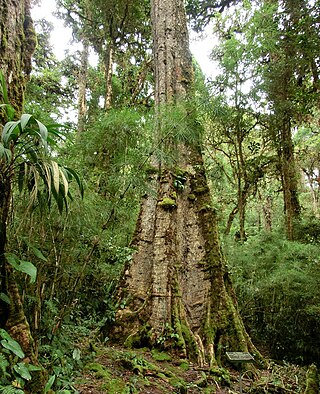
Quercus sapotifolia is a species of oak. It is native to southern and western Mexico as well as Central America. It is threatened by habitat loss.
Carpinus tropicalis is a species of tree native to central and southern Mexico, Guatemala, El Salvador, Honduras, and Nicaragua.
Quercus segoviensis is a species of oak native to southern Mexico and northern Central America. It is commonly known as k’antulán.
Cornus excelsa is a species of flowering plant in the dogwood genus (Cornus). It is native to mountain forests of Mexico, Guatemala, and Honduras.
















